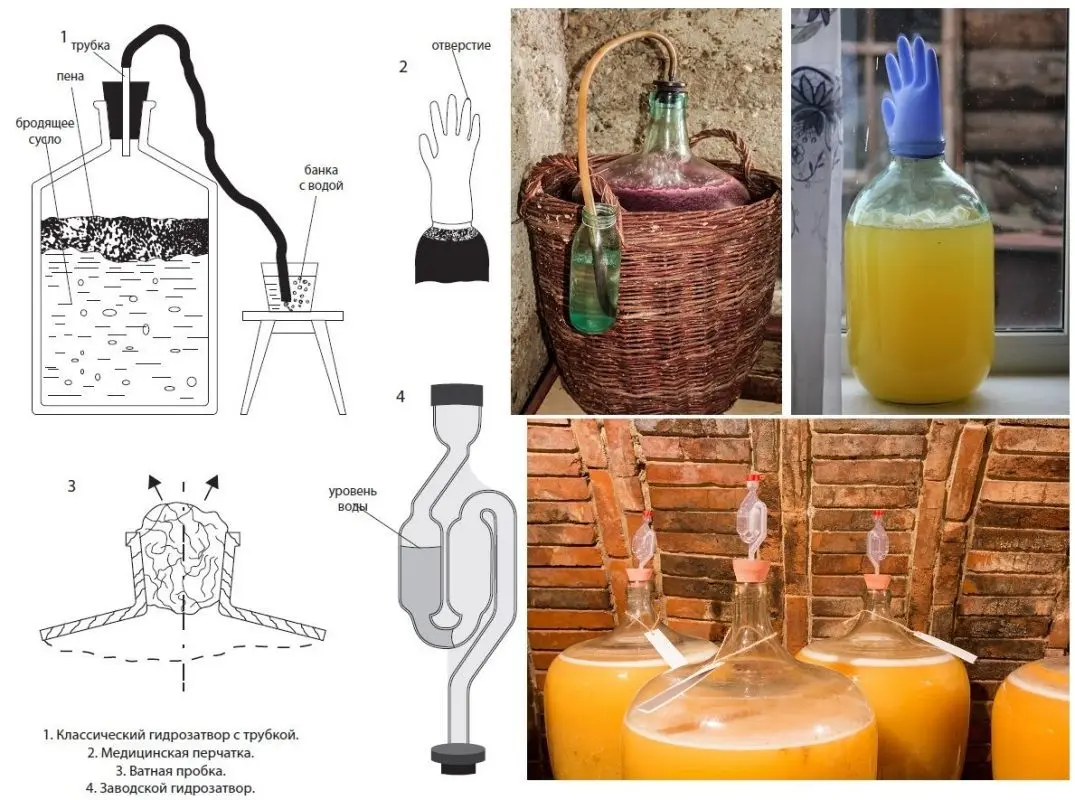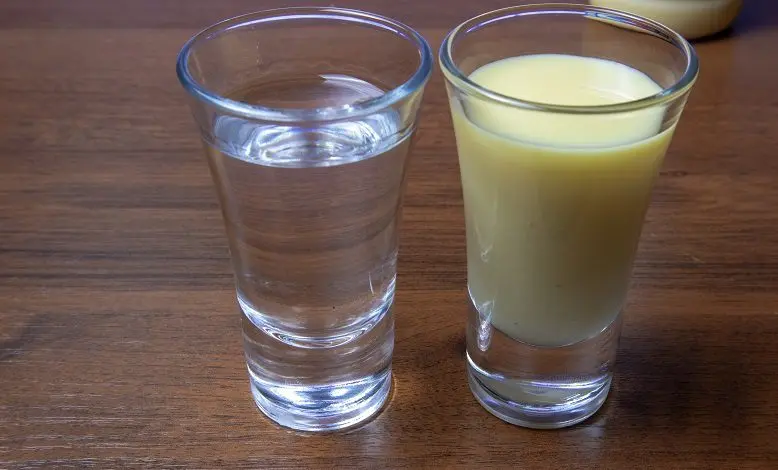It is dangerous to eat expired condensed milk, but it is a pity to throw it away. Due to its high sweetness, you can get a relatively large amount of moonshine from it, but only by the standard method, by adding water and yeast, the quality of the distillate will be terrible. In this case, the raw material requires an individual approach. The technology for making moonshine from condensed milk is one of the most difficult, but you can still get a drink of more or less acceptable quality.
Theory
Condensed milk contains 40-44% sucrose, which can be fermented into alcohol, obtaining 1-430 ml of moonshine with a strength of 480% from 40 kg of raw materials (in practice, the yield will be 15-20% lower). Condensed milk also contains lactose, which contains sugar, but the problem is that conventional alcohol and baker’s yeast do not process lactose, and adding two strains of yeast to the wort at once is fraught with fermentation problems. Therefore, it is better to refuse the processing of 2-3% sugar in lactose, the finished mash will remain a little sweet.
Both ordinary and boiled condensed milk are suitable for moonshine, the difference will be only in the shades of taste of the finished drink – from the usual distillate it smells more like baked milk, and from boiled – caramel. Expired products and even swollen cans will do: during the distillation of the mash, all dangerous microorganisms will die. The main thing is not to drink mash from spoiled condensed milk.
Attention! The quantity and quality of moonshine directly depends on the composition of the condensed milk. Ideally, the bank should say: “Whole condensed milk with sugar”, GOST is also required. If there are other labels on the label, it means that the product contains third-party additives (usually palm oil) and sugar substitutes, which are also sweet, but are not processed into alcohol.
Proteins and fats of condensed milk are the main problem of the moonshiner, since they spoil the organoleptics of the drink. Prior to distillation, the amount of these substances must be minimized. They act in several directions at once. Firstly, citric acid is added to the wash, which binds some of the proteins (fall to the bottom) and increases the acidity of the wort, which contributes to the work of the yeast. Secondly, after fermentation, the brew is cleaned with tea (tannins in tea bind proteins and other substances) and bentonite (white clay).
The exact amount of water depends on the sucrose content. Condensed milk is diluted so that the concentration of this substance is in the range of 16-19%. It is better to use alcoholic yeast, but baker’s yeast is also suitable.
Ingredients:
- condensed milk – 5 kg;
- water – 12 liters;
- citric acid – 120 grams;
- yeast – 250 grams pressed (50 grams of dry bakery or alcohol for 16-18 liters of wort);
- tea leaves – 6 tablespoons (optional);
- bentonite (white clay) – for cleaning 10 liters of mash (optional).
Condensed milk mash recipe
1. Heat water to 65-70 °C.
2. Pour the condensed milk into a fermentation tank with a wide neck. During fermentation, milk mass will accumulate on top, which must be removed.
3. In a thin stream, stirring constantly, add hot water. Wait until the wort cools down to 25-30 °C.
4. Add citric acid and yeast diluted according to the instructions on the bag.
5. Stir, install the lid with a water seal. Transfer the mash to a dark place at room temperature.

After 2-3 days, a dense cap will appear on the surface, resembling cottage cheese. Once a day, this cap must be removed, while it is better to leave the sediment at the bottom so as not to accidentally remove the yeast.
Depending on the yeast and temperature, the condensed milk mash will win back in 5-14 days. The end of the process is indicated by the absence of gas from the water seal and minimal sweetness with hints of bitterness.
6. Drain the finished mash from the sediment and degas (stir until gas is released). Together with the curd “cap” there will be up to a third of the waste from the volume of the mash.
7. Boil two glasses of water, add small-leaf tea leaves, mix, cover, wait for the mixture to cool to room temperature. Then strain and squeeze dry. Pour the resulting “tea” into the mash, mix, seal tightly and leave for 3-4 hours. Remove sediment (if any).
8. Lighten the wash with bentonite according to the instructions on the link. Then remove from the sediment and pour into a distillation cube.
Steps 7-8 can be skipped, but the quality of moonshine will be worse, since tannins in tea and bentonite will bind quite a lot of proteins and other substances that give moonshine a milky tint.
Obtaining moonshine from condensed milk
9. Overtake the mash for the first time at maximum speed, constantly monitoring the foaming and spraying. The first 20 ml of output from each kilogram of condensed milk (100 ml according to the recipe) should be collected separately and poured out, this is a harmful fraction. Take the distillate before the drop of the strength in the jet below 20%. During distillation, the smell of sulfur can be felt, the presence of protein affects.
10. Measure the strength of the resulting moonshine. Calculate the amount of pure alcohol (volume in liters multiplied by the strength in percent and divided by 100).
11. Dilute the product with water to a strength of 18-20% and overtake again. The first 12% of the yield from the amount of pure alcohol (the fraction is called “head”) is collected separately and poured.
12. Collect the main product (“body”) until the strength in the jet falls below 45%. Then finish the distillation or collect the tails “separately”.
13. Dilute the resulting moonshine from condensed milk (“body”) with water to a drinking strength, pour into glass containers for storage, seal tightly. Leave for at least 4-5 days to stabilize the taste.
14. Taste the drink (preferably served well chilled). One way or another, it will have sweetish or milky tones.

If you don’t like moonshine in its pure form, you can make milk or cream liquor from it, as well as rectify it, getting pure alcohol.









